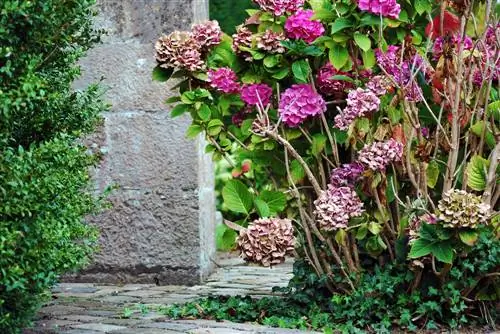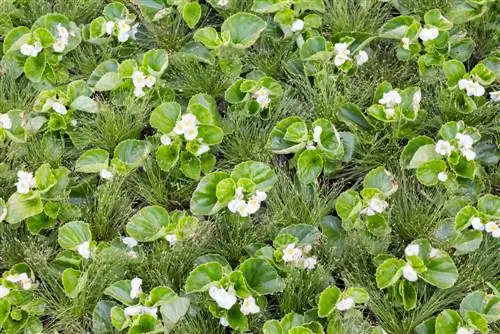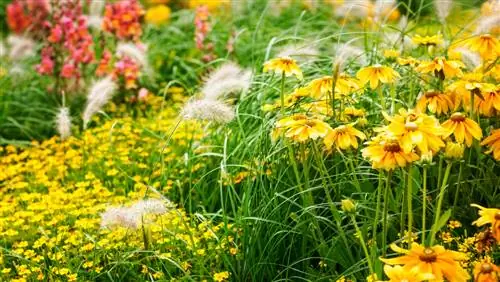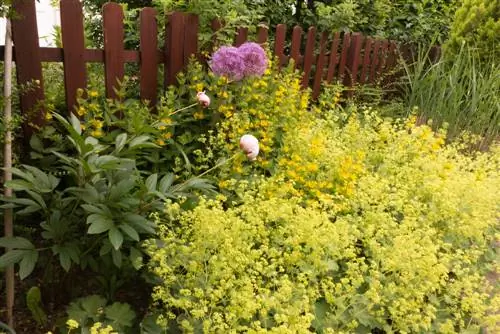- Author admin [email protected].
- Public 2023-12-16 16:46.
- Last modified 2025-01-23 11:22.
We all know it as a fast-growing and constantly present greener on facades and various trees. The ivy asserts itself skillfully and does not like to be stopped. How is it possible to combine it with other plants?
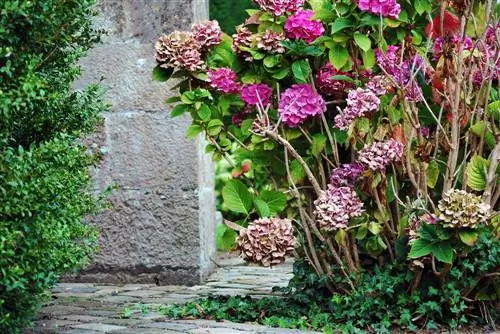
How can ivy be combined with other plants?
Ivy can be successfully combined with other plants by paying attention to foliage color, location requirements and growth habit. Suitable companion plants include shrub roses, hydrangeas, purple bells and clematis. For best results, competing plants should be given enough space and a suitable location.
What factors should you consider when combining ivy?
Not all plants are suitable for a combination with ivy. In order to be able to enjoy the compilation for a long time, you should consider the following factors in your decision-making process:
- Foliage color: dark green, rarely white or yellow variegated
- Flowering time: September to October
- Location requirements: Shady to partially shaded, nutrient-rich and moist soil
- Growth height: up to 20 m
- Growth habit: climbing or creeping
Climbing, he grows up whenever he has the opportunity. Otherwise the ivy will crawl along the ground. Take this into account if you want to visually combine it with other plants.
Ivy feels uncomfortable in a sunny, warm place, which is why it is important to combine it with companion plants that also prefer to seek the shade.
For success, you should also pay attention to the color of the ivy's foliage. Some varieties are even multi-colored and can therefore be specifically combined with similar plants.
Combine ivy in the bed
Ivy likes to exert high root pressure. For this reason, you should only put it together with competitive or already established plants. It can be showcased in the bed with flowering perennials as well as with ground cover and foliage perennials. Combinations with plants that produce intense flower colors are particularly impressive. These are excellently expressed in the presence of the mostly dark green leafy ivy.
Wonderful companion plants for ivy in the bed include:
- Shrub and floribunda roses
- Purple bells
- woman's coat
- hydrangeas
- Evergreen
- Sedges
Combine ivy with shrub roses
Ivy is often combined with shrub roses. It crawls along the ground, covering it with its shiny leaves and thus providing an attractive base. Meanwhile, the shrub roses unfold above and are not disturbed by the ivy. In principle, however, it is advisable to plant the shrub roses in front of the ivy so that they can really gain a foothold. For this combination, choose a location in partial shade.
Combine ivy with hydrangea
The hydrangea likes dark locations just as much as the ivy. She also attaches importance to a nutrient-rich and rather moist substrate. When combining, you should give the hydrangea enough space. The ivy is planted at a distance and can then green the ground around the hydrangea. White-green ivy varieties are particularly recommended here.
Combine ivy on the facade
If he had the choice, the ivy would cover all the facades with its green veil. But all alone he seems quite desolate. It only really comes to life with climbing plants that produce magnificent flowers.
These companion plants, for example, are suitable for the ivy on the facade:
- Clematis
- Climbing roses
- Funnel winch
- Honeysuckle
Combine ivy with clematis
Combine the already climbing ivy on the facade with a clematis. The two make a fantastic duo, with the clematis with its bright flowers complementing the ivy and making it a little brighter. It climbs up its shoots with ease and does not require any additional climbing support.

